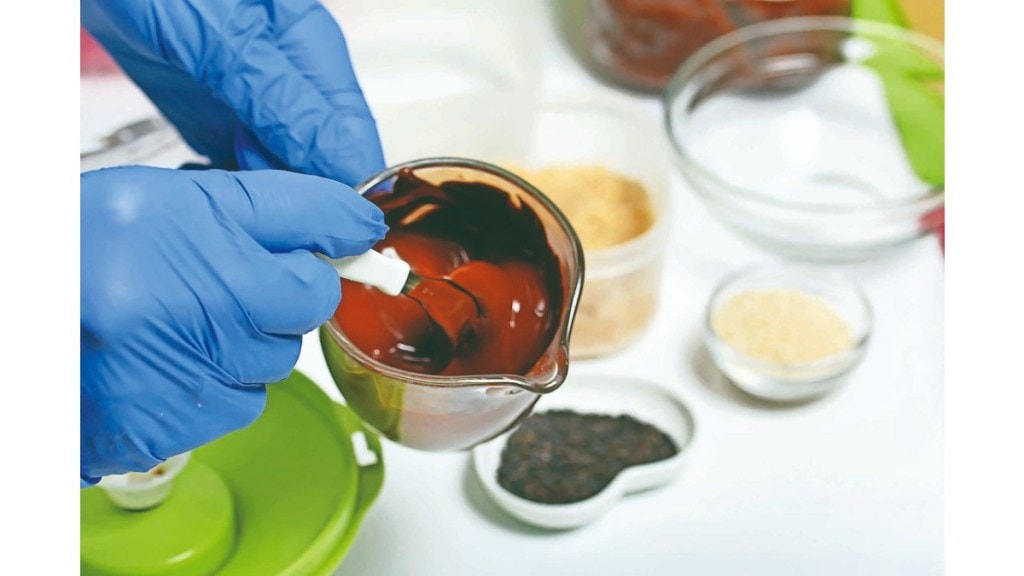First, it was lab grown leather, promising cruelty-free fashion. Then came cultivated meat, aiming to feed the world without factory farms. Even diamonds, once extracted from deep earth, can now be created in high-tech chambers. The latest to join this club of science-born luxury is chocolate.
Climate pressures, deforestation, and exploitative labour practices threaten the sustainability of the global cocoa industry, leading to new frontiers in food technology.
Lab grown chocolates, while still in early stages, are a sustainable option. According to global management consulting firm Kearney, the chocolate industry is at a turning point, with climate change, rising costs, and new regulatory requirements posing significant challenges to traditional production methods. Between 2014 and 2024, cocoa prices rose by 177% worldwide. However, Barry Callebaut, the leading manufacturer of high-quality chocolate and cocoa solutions, has recently entered into a strategic partnership with the Zurich University of Applied Sciences (ZHAW) to explore the potential of cocoa cell culture technology. This collaboration is part of Callebaut’s long-term commitment to innovation and sustainability in the chocolate industry.
So what is the company working on?
Cocoa cell culture is an emerging field that enables the cultivation of cocoa cells in a controlled environment. While still in the early stages of development, this technology presents promising opportunities to develop new chocolate products with unique flavour profiles or enhanced health benefits and provide an alternative cocoa source to diversify cocoa portfolio, at the same time, strengthen supply chain resilience while supporting traditional cocoa farming communities.
“This partnership reflects our proactive approach to building innovation capabilities that will shape the future of chocolate,” Dries Roekaerts, president customer experience at Barry Callebaut, stated in a press statement, adding, “We are not replacing cocoa from farms, but rather preparing for a future where we can offer consumers additional choices and ensure long-term supply security.” The collaboration brings together Barry Callebaut’s deep expertise in chocolate with the scientific leadership of ZHAW professors Tilo Hühn and Regine Eibl, renowned for their pioneering work in cell culture technologies. Their teams bring decades of experience and a strong portfolio of scientific publications to the project.
The research into cocoa cell culture technology opens up exciting possibilities for sustainable innovation in the chocolate industry. As a result, this initiative is part of a broader innovation strategy at Barry Callebaut, aimed at exploring disruptive technologies that can unlock new product possibilities and enhance sustainability across the value chain.
So what’s behind this sustainable innovation?
Unlike synthetic substitutes, lab-grown chocolate is made by cultivating cacao cells in controlled bioreactors or by programming microbes to produce cocoa’s signature compounds. The technology and process involve a detailed process.
First the tissue samples are taken from cocoa plants and placed in nutrient-rich media within bioreactors. These cells then reproduce rapidly, reaching maturity in a matter of days or weeks, compared to the several months required for traditional cocoa. Bioreactors provide controlled conditions that mimic the ideal rainforest environment for cell growth, ensuring a consistent product. The idea is to create a product that tastes and melts like the real one and without the environmental and ethical baggage.
Cacao is vulnerable to climate change due to rising temperatures and shifting rainfall patterns that are already reducing yields in West Africa. Also, it is estimated that over 70% of the world’s cocoa comes from Ghana and Côte d’Ivoire. These areas suffer from deforestation and child labour as the global demand for chocolate continues to rise, especially in emerging markets. At the same time, issues like low wages for farmers offer a way to break this cycle of dependency.
Food-tech companies across Europe, the US, and Asia are racing to make lab-grown chocolate commercially viable. Some are focused on cacao cell cultures, while others are developing fermentation-derived cocoa butter. For instance, Israeli food tech company Celleste Bio grows cocoa bean cells to produce cocoa powder and butter, a venture attracting attention from companies like Mondelez. US-based startup California Cultured cultivates cocoa cells in fermentation tanks, with a 10-year partnership with Japanese confectionery giant Meiji to supply its flavanol cocoa powder. Can we afford it? That’s the biggest question. Despite the promise, the production costs remain high, with small batches of lab-grown chocolate costing several times more than conventional chocolate. In fact, the global chocolate confectionery market is evolving rapidly, driven by consumer demand for indulgence, sustainability, and wellness-driven chocolate.
While the chances to convince chocolate lovers to embrace a lab-made alternative look dim, there is also emotional attachment to chocolate, childhood memories, comfort foods, traditions, etc, for an industry that was worth over $130 billion in global retail sales in 2024 and is expected to grow at a CAGR of 5.2% over the next five years.








